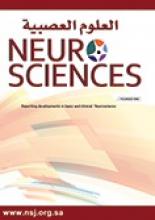Article Figures & Data
Tables
EEG Waveforms Relation to mental stress EEG waveforms behavior Delta (0.5 to 4 Hz) Delta waves are associated with healing and regeneration during our deep sleep cycles. A few minutes of allowing our brains to tune into delta waves can decrease overactivity and stress of anxious thinking30,31 Excessive: Brain injuries, learning problems, inability to think, severe ADHD
Inadequate: Inability to rejuvenate the body, inability to revitalize the brain, poor sleep
Optimum: Immune system, physical treatment, restorative / intense sleep34Theta (4 to 7 Hz) Theta is detected in anxiety and behavioral with activation and inhibition. When the theta wave occurs, it mediates and promotes interesting behaviors, for example, learning and memory. Under uncommon emotional situations, for instance, stress, there may be an imbalance of three key transmitter systems, which results in aberrant behavior35-37 Excessive: ADHD, unhappiness, hyperactivity, impulsivity, daydreaming
Inadequate: Nervousness, low emotional perception, stress
Optimum: Imagination, emotional relationship, intuition, rest38Alpha (8 to 12 Hz) Regular meditation and relaxation have been shown to enhance alpha waves and lower beta waves in the brain waves of effective thought and learning. This is the reason why it is the most recommended for lowering stress. When alpha’s reaction is non-existent or negative, the possibility of traumatic stress is suspected. In most harshly emotionally distressed fibromyalgia patients, the QEEG showed relatively minimal alpha activity and the most considerable alpha power in the group with the least emotional distress39-41 Excessive: Dreaming, inability to concentrate, too calm
Inadequate: Nervousness, high stress, insomnia, OCD
Optimum: Rest42Beta (13 to 30 Hz) Stress, “traffic jam,” overwhelmed, cannot process activated networks.
Beta wave is increased during stress44,45Excessive: Adrenaline, high arousal, failure to relax, stress
Inadequate: ADHD, daydreaming, depression, poor cognition
Optimum: Conscious focus, memory, problem-solving48Gamma (30 to 80 Hz) A fully standardized task with high ecological validity49 Excessive: Nervousness, high-level arousal, stress
Inadequate: ADHD, depression, knowledge disabilities
Optimum: Binding senses, cognition, knowledge handling, learning, awareness, REM sleep50






